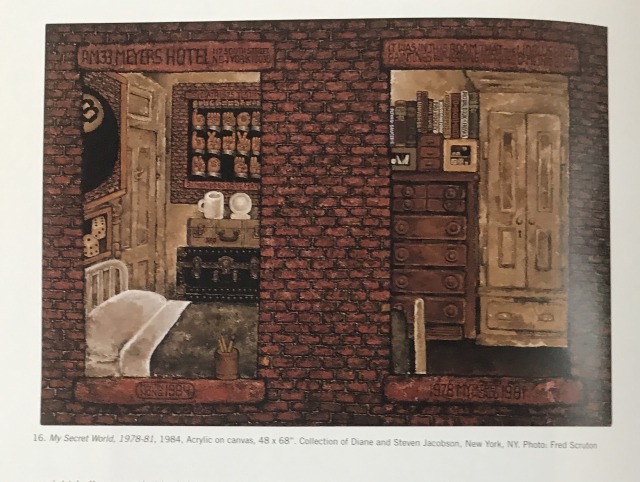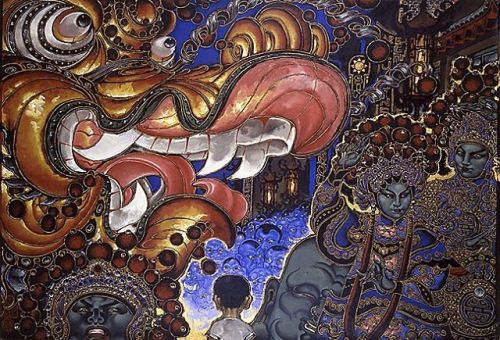#martinwong
 ALT
ALT ALT
ALT“Taking down to street level this time, I wanted to focus in close on some of the endless layers of conflict that has us all bound together… Always locked in, always locked out, winners and losers all…” - Martin Wong
Martin Wong (1946 – 1999) painted urban landscapes such as the tenement apartment buildings in the Lower East Side (LES) where he lived most of his life. He also depicted the lives of people considered underdogs, whether inmates in state prison, graffiti artists, firemen, etc.. Wong was a mostly self-taught Chinese-American artist, who grew up in Chinatown in San Francisco and was openly gay. When he first moved to New York, he lived in a cheap hotel room in exchange for working as a night porter before moving to an apartment in a Hispanic section of the LES known as “Loisaida.”.
“During the ’80s, in an era when Neo-Expressionism was the dominant mode, the largely self-taught artist stood out in subject and style. He sported a long mustache and cowboy duds. He was an openly gay Asian-American man during a period when the city’s Asian diaspora was treated as invisible. (Only 10 years prior, Chinese activists had realized the state census hadn’t bothered to even count hundreds of immigrants living in downtown tenements.) He also made it so that pinning him down on the basis of any one identity was impossible. Wong wasn’t deaf, but he used ASL. He hung out with Puerto Ricans, though he didn’t speak Spanish. He often felt anxious, but he used parody to sublimate his insecurities. In some outsider circles, he was an insider.” (from “Human Instamatic: Martin Wong’s Visionary Paintings of New York continue to Intrigue” by Tessa Solomon, Art in America, June 7, 2021)
Wong labeled himself ethnically as Chino-Latino because his father had Mexican heritage. In his paintings, he meticulously documented his urban environment and the lives lived within it using homoerotic imagery, poetry, and language to explore multiple ethnic, racial, and cultural identities, as well as to celebrated his own queer identity.
Image 1: Front cover featuring “Kato”, 1992, Acrylic on linen.
Image 2: “My Secret World”, 1978-81, Acrylic on canvas.
Sweet oblivion : the urban landscape of Martin Wong
[essays by] Marcia Tucker … [et al.] ; edited by Amy Scholder.
Author / Creator
Wong, Martin
New York : Rizzoli : Distributed by St. Martin’s Press, c1998.
85 p. : col. ill. ; 26 cm.
English
c1998
HOLLIS number: 990078744150203941
Happy Lunar New Year! #MartinWong “Chinese New Year’s Parade” 1992-94 now in the collection at @sfmoma Martin painted himself as a child watching the parade in #SanFrancisco #Chinatown #YearOfTheMonkey
Post link
Come hang! Only 2 days left to read these wavy gravy poem scrolls #Voices #MartinWong (at PPOW Gallery)
Post link



